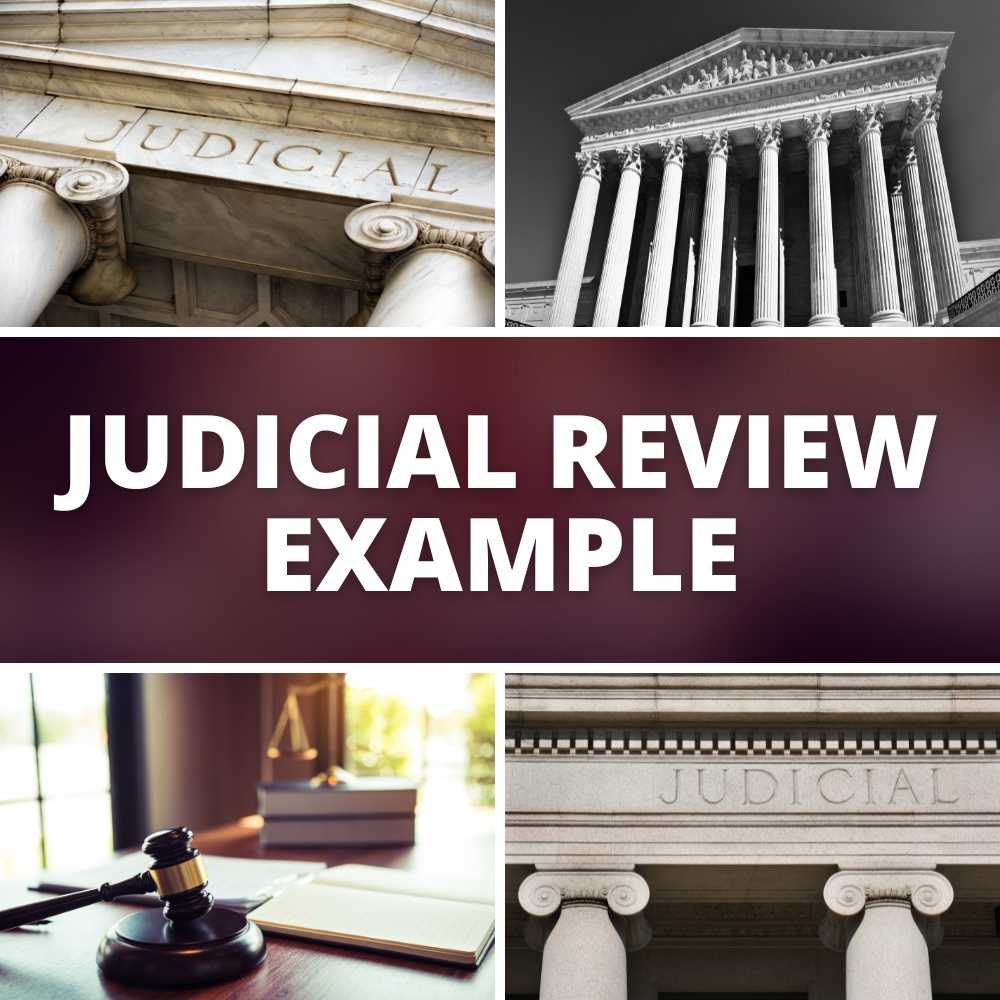Analysis: Trump's Stance On Tariff Judicial Review

Table of Contents
The Trump Administration's Tariff Policies
The core tenets of Trump's trade policies revolved around protectionism and the belief that the US had been unfairly treated in international trade agreements. The rationale behind the imposition of tariffs often cited national security concerns and the need to level the playing field for American businesses. This approach marked a significant departure from previous administrations' emphasis on free trade and multilateral agreements.
- Specific Examples: The Trump administration imposed tariffs on a wide range of goods, including:
- Steel and aluminum tariffs targeting numerous countries, ostensibly for national security reasons.
- Tariffs on Chinese goods, escalating into a protracted trade war. These tariffs covered billions of dollars worth of products across various sectors.
- Economic Impact: The economic impact of these tariffs was substantial and multifaceted. Some industries experienced short-term gains due to increased domestic demand, while others faced significant challenges due to higher input costs and retaliatory tariffs. Consumer prices also increased for many goods subject to the tariffs. Precise quantification of the overall impact remains a subject of ongoing debate among economists.
- Justification Arguments: The administration primarily justified these tariffs by claiming they were necessary to protect American industries from unfair competition, address trade imbalances, and enhance national security. These arguments were often met with skepticism by international trade partners and legal experts.
Legal Challenges to Trump's Tariffs
The Trump administration's tariff policies faced numerous legal challenges from businesses, industry groups, and other stakeholders. These challenges questioned the legality and constitutionality of the tariffs under both domestic and international law.
- Legal Arguments: Challengers argued that the tariffs violated:
- World Trade Organization (WTO) rules, claiming they were discriminatory and lacked proper justification.
- The president's constitutional authority, asserting that the tariffs exceeded the executive branch's power.
- Court Cases and Rulings: Several courts heard cases related to these challenges, including the Court of International Trade and appellate courts. While some challenges were successful in specific aspects, the overall legal battles were complex and yielded varied results. A notable example is Chamber of Commerce v. United States, which highlighted legal disputes concerning the scope of presidential authority on trade.
- Legal Precedents: The legal challenges to Trump's tariffs involved examining established legal precedents related to presidential trade authority, WTO agreements, and the interpretation of trade laws. The rulings in these cases impacted future interpretations of these precedents.
The Administration's Response to Judicial Review
The Trump administration actively defended its tariff policies in court, employing various legal strategies and arguments.
- Key Arguments: The administration consistently argued that its tariffs were justified based on national security concerns and the need to address unfair trade practices. They emphasized their right to protect domestic industries and retaliate against unfair trade actions by other countries.
- Role of Government Agencies: The Department of Commerce played a crucial role in providing data and justifications for the tariffs, while other agencies, such as the Department of Justice, handled the legal defense.
- Success Rate: The administration's success rate in defending its tariffs varied depending on the specific case and the court involved. Some challenges were dismissed, while others resulted in modifications or limitations on the tariffs.
The Impact on International Trade Relations
Trump's tariff policies and the subsequent legal battles significantly impacted international trade relations, triggering retaliatory measures and escalating trade tensions.
- Reactions of Other Countries: Many countries responded to the US tariffs with their own retaliatory tariffs, leading to trade disputes and damaging bilateral relationships. This impacted global trade flows and economic growth.
- Effect on Global Trade Flows: The imposition of tariffs disrupted global supply chains, increased costs for businesses, and reduced trade volumes in various sectors. This had ripple effects across the global economy.
- Retaliatory Tariffs: Countries like China, the European Union, and Canada imposed tariffs on US goods in response to the Trump administration's actions, creating a cycle of escalating trade conflict.
Long-Term Implications for Tariff Judicial Review
Trump's approach to tariff judicial review has significant long-term implications for future trade policy and legal precedents.
- Future Administrations: The legal precedents and interpretations established during this period will shape the ability of future administrations to utilize similar tariff strategies. It also sets a precedent for the potential use of national security as a justification for protectionist measures.
- Evolution of Legal Interpretations: The court rulings on presidential authority in trade matters will influence the balance of power between the executive and legislative branches regarding trade policy.
- Impact on the WTO: The legal challenges and the responses from other countries could impact the future functioning and effectiveness of the WTO and its dispute settlement mechanisms.
Conclusion
This analysis of Trump's stance on tariff judicial review reveals a complex interplay between trade policy, legal challenges, and international relations. The aggressive use of tariffs and the subsequent legal battles had significant economic and geopolitical repercussions. Understanding the legal precedents set during this period is crucial for future discussions regarding trade policy and the limits of presidential power in international commerce. Further research into the specific rulings and legal arguments is encouraged to gain a complete understanding of the implications of Tariff Judicial Review under the Trump administration and its lasting impact. A thorough examination of tariff judicial review cases and related legislation is essential for navigating the complexities of international trade law.

Featured Posts
-
 Cette Boulangerie Normande Offre Son Poids En Chocolat Au Premier Bebe De L Annee
May 02, 2025
Cette Boulangerie Normande Offre Son Poids En Chocolat Au Premier Bebe De L Annee
May 02, 2025 -
 Boostez Vos Thes Dansants Grace Au Numerique Conseils Et Astuces
May 02, 2025
Boostez Vos Thes Dansants Grace Au Numerique Conseils Et Astuces
May 02, 2025 -
 Shhr Ewrt Khnjr Ka Sayh Awr Azady Ky Jdwjhd
May 02, 2025
Shhr Ewrt Khnjr Ka Sayh Awr Azady Ky Jdwjhd
May 02, 2025 -
 France Crushes Italy Ireland On High Alert For Six Nations Clash
May 02, 2025
France Crushes Italy Ireland On High Alert For Six Nations Clash
May 02, 2025 -
 Premier Bebe De L Annee Une Boulangerie Normande Offre Son Poids En Chocolat
May 02, 2025
Premier Bebe De L Annee Une Boulangerie Normande Offre Son Poids En Chocolat
May 02, 2025
